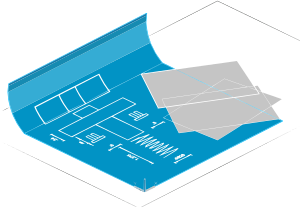Have you finished Step 1 – Setting Up Your Website and Blog yet? If not, check it out. If so, congratulations – you’re on your way to finding clients online and now it’s time to learn about SEO for small businesses.
SEO For Small Businesses
As we learned yesterday, a blog lets you share your expertise with the world and is important to help people find you. You want to create a blog that ranks high on Google and other search engines, so when people search for something related to your business, they find you in the results. Otherwise, you’re just another needle in the haystack.

To help people find you, make sure your website, blog and content are optimized – we call this “Search Engine Optimization” or SEO for short. SEO makes it easier for clients to find your website online through organic searches and other natural ways (it does not include paid search results), and is the key to inbound marketing for small businesses.
How Sites are Ranked
Sites are ranked on a lot of factors, and the 3 important ones to do SEO for small businesses well are content, links, and structure. By taking advantage of these, you can turn your blog into a homing beacon for clients online.
3 Steps To Do SEO Well
1) Content
This is the best opportunity you have to help your site rank higher. A great way to generate content is posting on a blog; every time you post, it registers as a new page that’s ranked by search engines. Google scans every page of your website to determine what it’s about. It searches for clues, but it’s not perfect – you can help by ensuring your content is focused on keyword campaigns, and of course, is relevant, good quality and regularly updated.
2) Links
Google also scans the links on your website. There are 3 types:
-
Inbound
Inbound links are when another site links to your website. When your site gets inbound links, it gains “authority.” You get authority for an inbound link based on how important the site is that’s linking to you (this is known as “link juice”). For example, the Globe and Mail linking to your site has more juice than a small independent blogger with a limited following. You can’t force people to link to you; the best way is to write great content so others take notice.
-
Outbound
Outbound links are when you link to another site. It’s a way to tell Google that your site is related to theirs, and it also helps you get noticed by others.
-
Internal
Internal links are when you link to other pages on your site. Internal links show Google which pages on your site are related, and helps Google understand what you focus on. You can also show if a particular page is important by linking to it repeatedly.
3) Structure
Google will also analyze the structure of your website, essentially how it is built and organized, like the framework of a house.

For example, they’ll monitor how long it takes for your page to load – the shorter the better. If you are hiring someone to build your website, make sure you have the same goals for structure, and ask to see websites they’ve build to test their load times etc… If you already have a site, a simple way to decrease load time is to limit the number and size of images on each page (you can change the size of an image in MS Paint, Photoshop or another photo editing software).
That’s the basics of what you need to know about SEO for small businesses. We’ll be chatting a lot more about SEO together in the future – for a more advanced overview now, check out this 5 part series on SEO for small businesses.
Now your website and blog are set up, and you’ve started learning how to optimize your online presence, it’s time to figure out the what words will help your business get found on Google! Check out Step 3 – Keyword Research For Small Businesses.
New to Spokal? This is part of our 12 Steps To Getting Customers Online guide. Feel free to check it out and let us know what you think.